Best Guitar Amp Under 300 Dollars - Combo Amps & Amp Heads
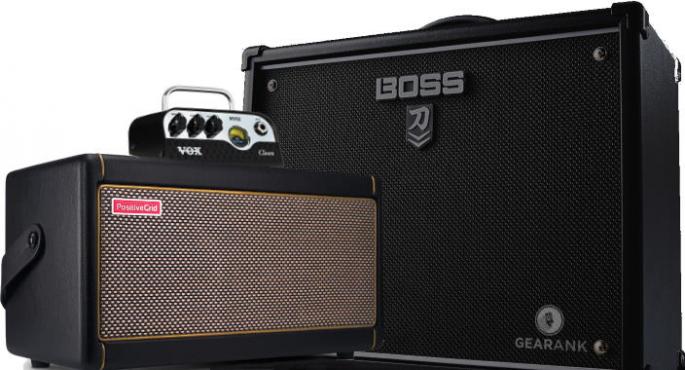
Author & Contributors
Alexander Briones
I have been writing about and researching music gear for many years, all while serving as a music director at my local church. I engage in guitar playing and singer-songwriter stints, in addition to mentoring young musicians and teaching guitar and bass.
Best Guitar Amp Under 300 Roundup
Blackstar ID:Core 40 V3
Cons
- Not loud enough for a full band setting
Pros
- Great sounding high-gain tones
- Versatile voicing
- Intuitive ISF control
- Outputs for streaming and direct recording
The ID:CORE 40 V3 houses a 40W amp paired with two 6.5" speakers for stereo sound, featuring Blackstar's Infinite Shape Feature (ISF) that lets you shape your tone from American to British and in-between with just one knob.
In addition to its unique ISF feature, the amp has 6 amp voicings which range from clean to saturated overdrive, allowing for a wide range of tone options and it has 12 built-in effects for further expanding your sonic palette.
Other features include TRRS Line in/Streaming input and USB direct recording.
This amp is at it's best as a great sounding beginner friendly amp that has enough volume for solo practice but will usually need to be miked up for practicing with a loud band or used at gigs.
One thing that helps beginners get good tones with this amp are the amp models that allow you to choose settings that pair well with your guitar regardless of the type of pickups you have, so weather you're playing a guitar with humbuckers or single coils, you'll find a tone that works. For example the 'Clean Warm' model pairs nicely with single coils for jazz and funk while the 'Super Crunch' model is good for blues with either type of pickups, and the 'OD2' model goes great with humbuckers for hard rock. You'll probably find you spend hours going through all the models to find the sound that suits your guitar and musical style.
The ID:Core 40 V3 is as versatile as it gets given this price range, featuring the latest DSP improvements that Blackstar has to offer.
Specifications
- Power: 40W (2 x 20W)
- Speaker: 2x6.5"
- Amp Modeling: 6 x Amp Models
- Effects: 12 Different Modulation, Delay, Reverb Effects
- Input: 1 x 1/4", 1 x 1/8" (Aux in)
- Outputs: 1 x 1/8" (Line Out / Headphones)
- Weight: 13.6 lbs.
| Website | Source | *Rating Value |
| Do Re Mi Studios | Paulo | 100/100 |
| Guitar World | Nick Guppy | 100/100 |
Boss KATANA-50 MkII
Cons
- Software editor takes a bit of getting used to
- Not ideal for those who want to tweak and play with more amp models and effects
Pros
- Versatile attenuator, 3 power settings makes it great for both gigs and quiet practice
- Fewer but great sounding amp types, especially the clean, brown and lead
- Good quality effects, derived from Boss/Roland's guitar processors
- Intuitive control setup
The Katana 50 MkII is a versatile combo amp packed with practical technology, including Boss' guitar effects processing.
At its core is a 50W amp with built-in power attenuator, which allows you to half its output to 25W, or go as low as 0.5W for quiet practice.
Built-in amp modeling allows you to choose between different voicings, from clean to lead, there's even a setting that's meant for acoustic-electric guitar. Although I do have to point out that if you're looking for a huge number of amp models to play with then this isn't the best option, but the models it has sound great.
In addition, the amp lets you utilize effects right on the amp, with over 60 digital Boss effects available via the amp's software editor. Unfortunately the software editor is a bit overwhelming at first, but if you take the time to understand it you'll get a lot more out of the effects.
This amp can go from practice to stage and recording use with its support for two external footswitch / expression pedals, 1/4" output and USB recording output.
With its power attenuation and versatile digital sound processing, the Boss Katana-50 MkII is very easy to recommend, particularly for anyone who doesn't mind having a large practice amp that's fully capable of gigging.
Specifications
- Power: 50W (25W / 0.5W Attenuation)
- Speaker: 1x12"
- Effects: Modulation, Delay, 60 BOSS Effects (Tone Studio software)
- Input: 1 x 1/4" (Instrument), 1 x 1/4" (PowerAmp), 1 x 1/8" (Aux)
- Outputs: 1 x 1/4" (rec/headphones)
- Weight: 25.6 lbs.
| Website | Source | *Rating Value |
| Guitar World | Richard Blenkinsop | 100/100 |
| Guitar | Richard Purvis | 80/100 |
Orange Crush 35RT
Cons
- Clean tone is not as good as its Dirty Channel
- Needs to be driven hard to get good overdrive tone (try tweaking the EQ to improve the sound at lower volumes)
- 10" speaker means limited bass response
Pros
- Great sounding Overdrive for rock, blues and similar styles
- 4-stage preamp design that results in better OD saturation and response
- Distinct aesthetics and portable form factor
- Practice friendly features include built-in tuner, aux input and headphones out
- Good sounding reverb
Orange goes down the old path of straightforward rock and roll with the 2-channel Orange Crush 35RT.
There are no amp modeling features to complicate things, rather it depends on its 4-stage analog preamp circuit, which gives it a streamlined yet familiar tone. This simplicity helps it to gather consistently high ratings, even exceeding those of amps with more features and why it has consistently topped the ratings in the Solid State Amp category since we began publishing that list.
With its 35W and 1 x 10" combo configuration, it can work as a good practice amp with enough volume for jamming with friends.
Thankfully, it does come with some nifty extras, which include an onboard tuner, cabinet emulated headphone output and built-in reverb
Orange has always been a "rock" oriented amplifier company. The trademark Orange saturation is present in the Orange Crush 35RT even at lower volumes. The thick grind of the Orange tone isn't compromised with the absence of tube circuitry as Orange has put a lot of time getting their solid state Crush series to get them as close to tube tone as possible.
One of the limitations that the amp has is the 10" speaker. The deviation away from the standard 12" speaker results in less physical bass response.
If you're looking for a great blues and rock tone without having to worry about tube amp maintenance, the Orange Crush 35RT makes a perfect jam partner.
Specifications
- Power: 35W
- Speaker: 1 x 10"
- Effects: Reverb
- Input: 1 x 1/4", 1 x 1/8" (Aux)
- Outputs: 1 x 1/4" (Headphones/Line)
- Weight: 25 lbs.
| Website | Source | *Rating Value |
| Music Radar | Nick Guppy | 100/100 |
| Guitar World | Chris Gill | 92/100 |
Positive Grid Spark Modeling Amp
Cons
- Speakers sound 'muddy' for electric guitar sounds in particular
- Requires Mobile/Tablet for detailed control. No Desktop Software
- Ads for expansion pack in the controls
- Gets so much right that it leaves you wanting even more
Pros
- Great wireless mobile app integration that 'just works'
- Good collection of Amp and Effect Models
- Compact 'Boutique Amp' looks suitable for the home
- Versatility - Stereo Guitar, Bass and Acoustic Amp as well as Bluetooth Speakers
- Excellent Practice Options
Positive Grid were previously known for their excellent 'BIAS' software modelling apps and that experience shines through here. The amps and effect models are quite good but the sound is hampered by the speakers sounding too bass heavy which often leads to a 'muddy' tone by default. There are ways to address this but it's a hassle to have to deal with. Not everyone find this a problem but many do including myself so be warned.
The Spark 40 aims for the look and feel of a small boutique amp and they've done a pretty job at making it home friendly as possible. You still have your classic amp control knobs for gain, Hi/Mid/Low and Master volume plus Mod Level, Delay and Reverb and you can store 4 patches in the unit.
The controls look pretty well organised on the top of the amp with about as many knobs as you could fit (10). There's an amp style selector and the usual amp controls (gain, 3 band eq and master) plus single knobs for levels of Mod, Delay, Reverb and Output (the real master volume). You can recall 4 patches via buttons next to a tap tempo button and these can also double as tuner lights which is pretty handy.

The control knobs on the Spark 40 amp itself.
They've done good job of making it look and feel like a classic amp here but there's only so much you can control this way. For more fine grained control of effect parameters or amp models you need to use the app. The problem you inevitably run into with this sort of setup is that of 'dueling' controls between the analogue knobs and the app or patch values. Short of expensive motorized knobs or led lights all over the place there really isn't a perfect solution which means that you are often operating blind when looking at the physical controls.
On the Spark if you twist a knob it will change that associated setting to the knob value and the app shows this is real time. This could result in a quick jump from it's prior value which could be nasty surprise if you are turning the gain 'down' from 9 when it has actually been operating at 2. Controlling the amp models and effects in the app is fairly straightforward. The signal chain is laid out as a virtual pedalboard with 6 effect pedal type slots and one amp model as below:

When it comes to the sound though there is issue that we need to talk about. It's divided guitar players between those that don't hear it, those that don't mind and those that think there's a problem. For me, the moment I started playing through the amp the sound coming from the speakers was overly 'bassey' for electric guitar. You won't have to look far to find many others experiencing the same, describing it as 'Muddy', 'Muffled', 'Boxy', 'Wooley' and complaining about the lack of brightness. It's surprising for such small speakers really but they do put out a lot of low end and that can obscure the high end, particularly the high midrange that's so important for guitar. Personally I can still hear and appreciate the tones which do sound good themselves but alongside a certain 'rumble'. I found myself using the bridge pickup to get the same tone as the bridge/neck mix on my humbuckers and but that didn't quite work.
One of the highlights of the package are the features that allow you to play along with practically any song on YouTube with chords automatically detected and shown. There's also a 'Smart Jam' feature where you can play a short chord progression and it will add a bass and drum accompaniment as well as generic track for you to Jam with. This doesn't always produce great results but it can be handy. For fun I pulled up an old smartphone video of me and a friend at an open mic night playing an original song with less than 50 views on it and sure enough, after the first playthrough it produced an accurate rendering of the chords which is quite impressive!
If you're looking for a home friendly amp with a ton of sounds and practice options literally at your fingertips via the app then this is a great choice. If you're looking for a more traditional combo modeling amp, other options include the Marshall Code 50 and any of the Line 6 Spider V amps.
Specifications
- Power: 40W Class D
- Speaker: 2x4"
- Effects: 30 Amp models, 40 Effects
- Input: 1 x 1/4" (Instrument), 1 x 1/8" (Aux)
- Outputs: 1 x 1/8" (Headphones)
- Weight: 11.46 lbs.
| Website | Source | *Rating Value |
| Gearank | Daniel Barnett | 85/100 |
| Wired | Parker Hall | 80/100 |
| Guitar World | Rob Laing | 100/100 |
Best Hybrid & Tube Amps Under $300
Bugera V5 Infinium
Cons
- Limited tone shaping options
- Not enough gain for genres like metal
Pros
- Built-in attenuator enables cranked tones at lower volumes
- Tubes can be easily replaced for future tonal upgrades and maintenance
- Great entry to tube tone and feel
Bugera is known for affordable tube amplifiers, and the Bugera V5 Infinium is their top rated budget amp in the sub $300 price range.
This 5W all-tube amp houses a 12AX7 preamp tube and EL84 poweramp tube, with built-in power attenuation that lets you switch the power down to 1W or 0.1W. This built-in attenuation allows you to crank the guitar amplifier at lower volumes, which means allowing for great tube amplifier tones at more room friendly volume levels.
Also worth noting is Bugera's Infinium technology which extends the life of tubes by making sure that the tubes are operating at their ideal parameters.
Low to mid-gain amp tones are where this amp shines, and as such, it works well with a wide range of musical styles. The ability to attenuate its output power down to 1/10th of a Watt is also an important for those that need that saturation at a more manageable volume.
The simplification of the usual tube amp setup is not without its compromises. For one, the lack of amp tone shaping limits the kind of tones you get from the amp. It's not about to let you go into super scooped metal territory either.
Despite these limitations, the Bugera V5 Infinium is a great entry point into the world of tube amps, the built-in attenuator also makes it great for bedroom levels practice. It gives you genuine tube tones at lower volume levels.
Specifications
- Power: 5W, 1W, 0.1W
- Speaker: 1x8"
- Effects: Reverb
- Input: 1 x 1/4" (Instrument)
- Outputs: 1 x 1/4" Internal Speaker, 1 x 1/4" Headphones
- Weight: 22.1 lbs.
| Website | Source | *Rating Value |
| Sound On Sound | Paul White | 96/100 |
| Audiofanzine | Mythrandir1 | 100/100 |
Monoprice Stage Right 611815
Cons
- Can get muddy when driven too hard
- Not for those who prefer tight response
Pros
- Hard to beat when it comes to value
- Vintage clean and dirty voicings
- Good volume for a 15W amp
- Works well with pedals
While hybrid amps provide more functionality, they still cannot replace the appeal of a genuine all-tube circuit amp. And the Monoprice 611815 gives you just that, a straightforward all-tube guitar combo amp that continues to rate highly in the sub $300 price range.
The preamp section houses three ECC83 tubes, while the power section has two EL84 tubes, a potent combination used on many classic amps.
But what's really interesting is the amp's 12" speaker, which is a Celestion Red Truvox 1215, quite the catch for something so affordable. Other features include basic 3-band EQ and built-in spring reverb.
Tonewise, its surprising at what this little amp can do. It has a great vintage tone that's perfect for blues and slide. The spring reverb enables 60s surf rock tones at the edge of breakup.
Like all tube amps, many don't come with the best ones straight from the factory. The good thing is that they're a great way to upgrade your tone. It brings up the overall cost a bit but it's worth it if tone is your top priority. Because of the vintage tone, it's not ideal for heavier genres and higher gain settings.
Looking to spend a nice afternoon jamming to some blues? The Monoprice Stage Right 611815 is a great vintage sounding, all tube amp for days when you just want to blues it up. And you don't have to spend much to get this good quality guitar gear.
Specifications
- Power: 15W
- Preamp Tube: 3 x ECC83 (12AX7)
- Poweramp Tube: 2 x EL84
- Speaker: 1 x 12"
- Effects: Reverb
- Input: 1 x 1/4"
- Outputs: 1 x 1/4" Speaker Out, Effects Loop
- Weight: 31.62 lbs.
| Website | Source | *Rating Value |
| Festival Peak | Christian A. Pfeiffer | 88/100 |
| YouTube | 60 Cycle Hum | 97/100 |
Guitar Amp Head Under $300
Vox MV50 Clean Hybrid Tube Amp Head
Cons
- Limited functionality if you don't use pedals
Pros
- Excellent pedal platform
- Clean tone reminiscent of Fender and Roland JC series amps
- Compact size makes it easy to bring to small gigs
As the name implies, the Vox MV50 Clean is lunchbox style amplifier head meant for producing clean tones.
It utilizes the same Korg Nutube technology as the other MV50 amps, which mimics the behavior of actual tubes using modern materials that allows it to be more compact, affordable and efficient. This tube preamp is paired with a solid state power amp.
Instead of Gain and Tone controls, this one has volume, treble and bass knobs.
The clean tones on the MV50 make it a great pedal platform, especially for dense reverbs and long delays. Reminiscent of Fender Blackface amps or Roland JC series amplifiers, it keeps poise and remains clean even with a lot of effects piled on top. The compact size of the amp also makes it a great live amp for smaller gigs.
The lack of an overdrive and reverb limits this amp but it does its specific job as a clean pedal platform exceptionally well. If you're looking to make dense soundscapes with a tube amp that can keep up with as many layers without saturating too early, the Vox MV50 is the ideal pedal platform. If you're into Vox tone and want a combo amp, they have plenty of offerings in this price range, including the hybrid Vox AV15.
Specifications
- Power: 50W
- Preamp: 6P1 NuTube
- Effects: None
- Input: 1 x 1/4"
- Outputs: 1 x 1/4" (Speaker Out), 1 x 1/4" (Headphones/Line)
- Weight: 1.32 lbs.
| Website | Source | *Rating Value |
| Sound On Sound | Paul White | 92/100 |
| Guitar World | Chris Gill | 95/100 |
Things to Consider When Buying an Electric Guitar Amp Under $300
-
Starting off with the things to consider is price. If you think this price range is a stretch you may want to look at the best amp under 200. Alternatively, if you would like to go with something better you may want to look at the best guitar amp under 500.
Amp Head vs Combo Amp
- Amp Heads are amplifiers without speakers built into them, and in the sub $300 price range, most of the good ones come with a compact form factor. >b>This means that you'll need to spend more for a compatible speaker cabinet to make it work, but it also means that you are free to pick the speaker you prefer - as long as they are compatible with the amp head.
Combo amps combine both the amplifier and speaker(s) in a single cabinet, making them more practical and affordable. They provide all your guitar amplification needs in one unit. This also means that they are bulkier and heavier compared to amp heads, but when you factor in the weight of the speaker cabinet, they are equal.
Tube vs Solid-State or Digital
- Tube amps are generally regarded as better sounding, but they are more fragile and often more expensive. So the lower the price range is, the harder it is to find good tube amps. Thankfully, there are still a few good ones, but they are mostly limited to compact and low power rated models.
While some tone purists consider digital and solid-state amps to be inferior to tube amps in terms of tone, they cannot discount their practicality, affordability and reliability.
There are also some amps that combine the warmth of tubes with the flexibility of digital sound processing, also called hybrid amps. This is usually made by equipping the preamp section with actual tubes. Some of them have been rated high enough by guitarists to get featured in this guide. Electric guitars require more tone coloration than their acoustic counterparts, so an acoustic guitar amp like the Fishman Loudbox Mini won't be ideal.
Amp Modeling & Effects
- Modeling amps utilize DSP (Digital Sound Processing) to replicate the sound of many different amps, adding sonic flexibility to what once were one trick ponies. And since we are dealing with affordable amps here, the quality of amp models are not as good as more expensive modelers, but are still good enough for practical use. Some of these amps can even handle bass guitars to a reasonable degree.
Like amp modeling, some guitar amplifiers carry with them digital effects. And again, it's unreasonable to compare the quality of these effects to expensive stompboxes, but they can provide basic sonic variety that many musical styles require.
Power Rating and Speaker Size
- The general idea is that power rating is proportionate to how loud the amp is, and since high power ratings also mean higher cost, there aren't that many big and loud amps in the sub $300 price range. Thankfully, compact and low power amps are quite popular because they are ideal for practice and small venue jams. The same can be said about tube amps, where lower power makes it easier to crank the amp at lower volumes. Just don't expect these amps to give you full sound on stage. Also in line with power rating, there are some amps that feature power attenuation, where you can cut the power rating back to get cranked tones at lower volumes.
Speaker size affects sound clarity and projection, and obviously, they are limited by the size of the cabinet and the power of the amplifier. Smaller speakers have emphasized mids, which will appeal to a guitar player who plays blues. Bigger speakers are often preferred by those who want extra bass emphasis.
Connectivity
- While they are of secondary importance, extra input/output options add to the overall functionality of amplifiers. An aux input allows you to play along with your favorite tracks, while headphone output lets you practice quietly via headphones. Speaker output lets you use the amp with other guitar speaker cabinets, while DI output lets you connect straight to a PA speaker system or recording console. Many modern guitar amplifiers come with USB connectivity for direct computer recording and software control, while some even come with wireless streaming via Bluetooth. If you're planning on using multiple amps, then you'll need an ABY Pedal, which can split your signal to go to two different amps.
- Amp Heads are amplifiers without speakers built into them, and in the sub $300 price range, most of the good ones come with a compact form factor. >b>This means that you'll need to spend more for a compatible speaker cabinet to make it work, but it also means that you are free to pick the speaker you prefer - as long as they are compatible with the amp head.
Best Guitar Amp Under 300 Dollars Selection Methodology
The first edition was published in 2018.
To be eligible for this guide an amp had to be either a Combo amplifier or Amp Head (no pedal amps were considered), have a street price between $200 and $300 and be available from a major US based retailer.
We created a short-list of 29 popular amps that met the criteria, then we collecting retailer ratings, user reviews and forum discussions about each one - that totaled to more than 18,900 rating sources. We then processed that data with the Gearank Algorithm to produce rating scores out of 100 for each one which we then used to select the highest rated options in each category above. For more information about our methods see How Gearank Works.
About the Author and Contributors
Here are the key people and sources involved in this guide's production - click on linked names for information about their music industry backgrounds.
Lead Author & Researcher
Alexander Briones
I have been writing about and researching music gear for many years, all while serving as a music director at my local church. I engage in guitar playing and singer-songwriter stints, in addition to mentoring young musicians and teaching guitar and bass.
Having used many different amps over the years, the 5 best guitar amps under 300 that I personally recommend are very similar to how real world ratings are trending. If you're looking for a good starter or step up amplifier, it's hard to go wrong with the ones in this list.
Contributors
Daniel Barnett: Positive Grid Spark Review.
Jason Horton: Editing and Illustrating.
Media
Main/Top Image: Created by Gearank.com using photographs of the Vox MV50 Clean, Positive Grid Spark and Boss KATANA-50 MkII.
The individual product images were sourced from websites, promotional materials or supporting documentation provided by their respective manufacturers except for the Spark Controls and Spark App pictures which were taken by Daniel Barnett.
The videos have been embedded in accordance with YouTube's Terms of Service.



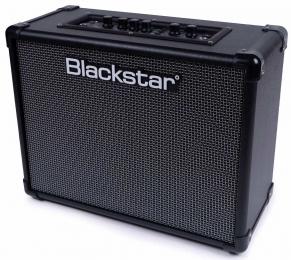
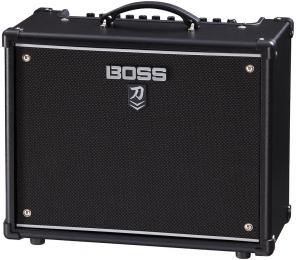
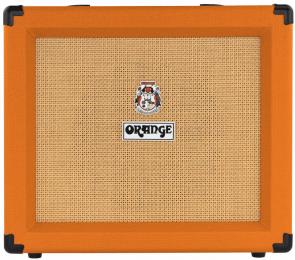
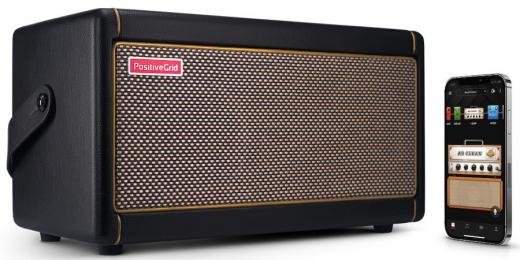
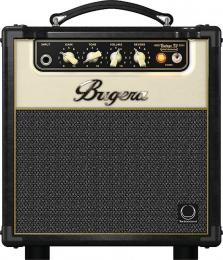
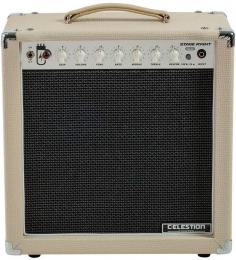
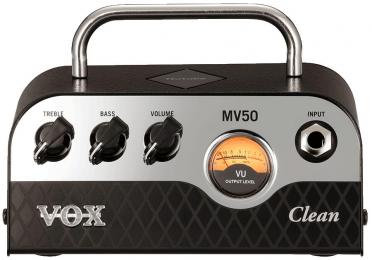
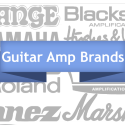 The Best Guitar Amp from the
The Best Guitar Amp from the 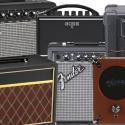
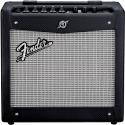
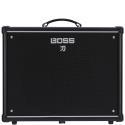
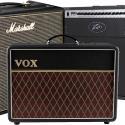
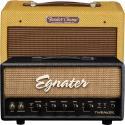 The Best Small / Low Watt
The Best Small / Low Watt 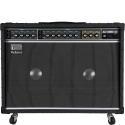
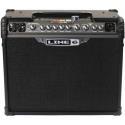
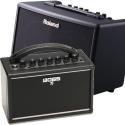
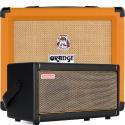
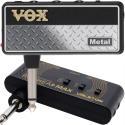
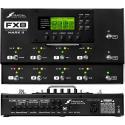
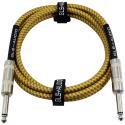





Comments
The following amps came off
Submitted by Jason Horton on
The following amps came off the recommended list above when we published our August 2022 Edition:
We have moved our
Submitted by Jason Horton on
We have moved our recommendation for the Vox VT40X to our guide for The Best Guitar Amps Under $500 due to a price increase that put it above the $300 limit for this guide.
Publication of the May 2021
Submitted by Jason Horton on
Publication of the May 2021 Edition resulted in the following coming off our recommended list above - but you can still see our analysis of it: Roland Cube Street.
We have removed the Marshall
Submitted by Jason Horton on
We have removed the Marshall Origin5C from the recommended list above due to it being discontinued.
The following amp has been
Submitted by Jason Horton on
The following amp has been removed due to a price increase putting it above this guide's price limit, but you can still see our recommendation in the Modeling Amp guide: Marshall Code50.
As a result of our April 2020
Submitted by Jason Horton on
As a result of our April 2020 update the following amps came off our recommended list above, but you can still see our analysis of them:
Today the following amp was
Submitted by Jason Horton on
Today the following amp was removed from our recommended list above, due to having been discontinued, but you can still read our analysis of it: Blackstar HT-1.